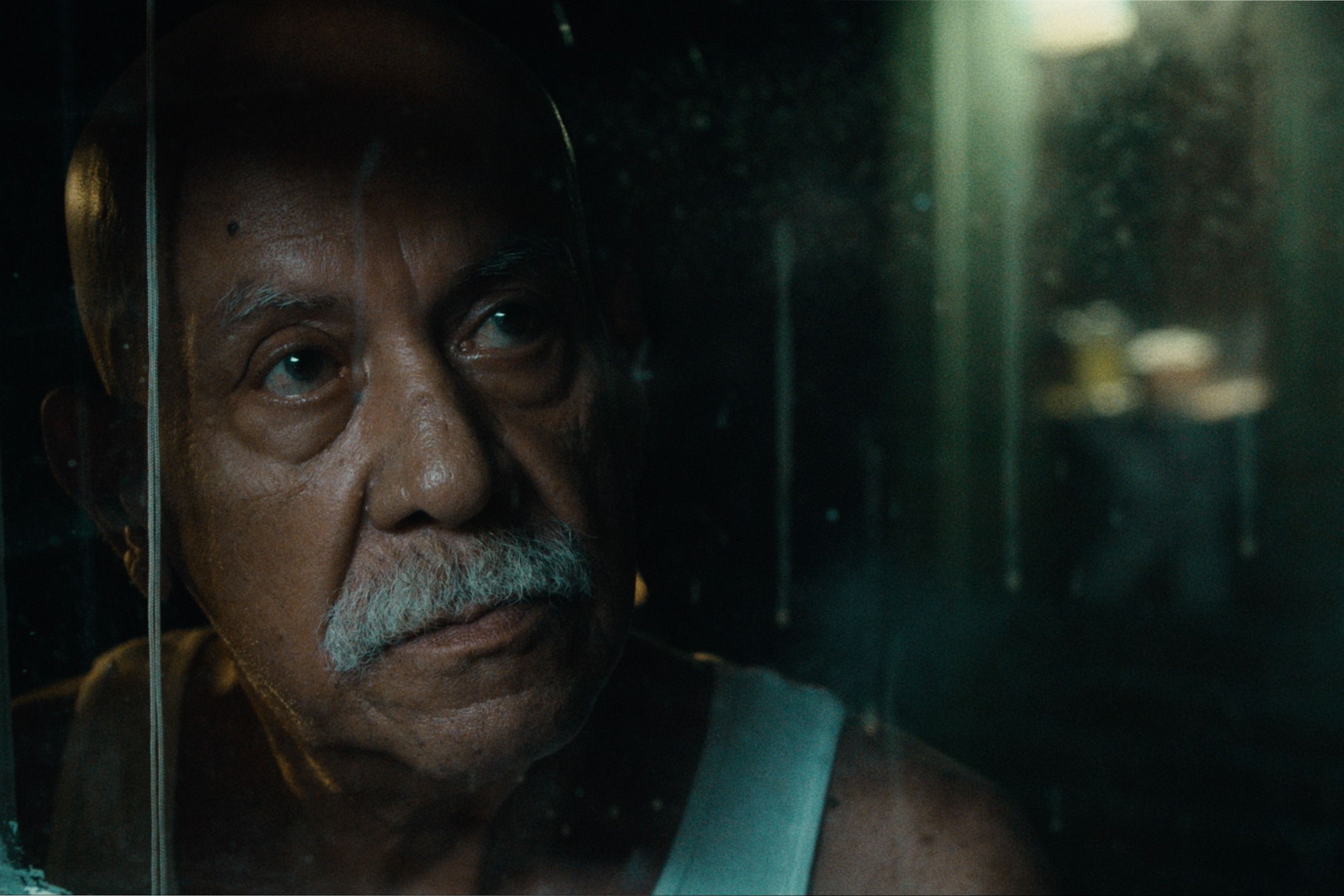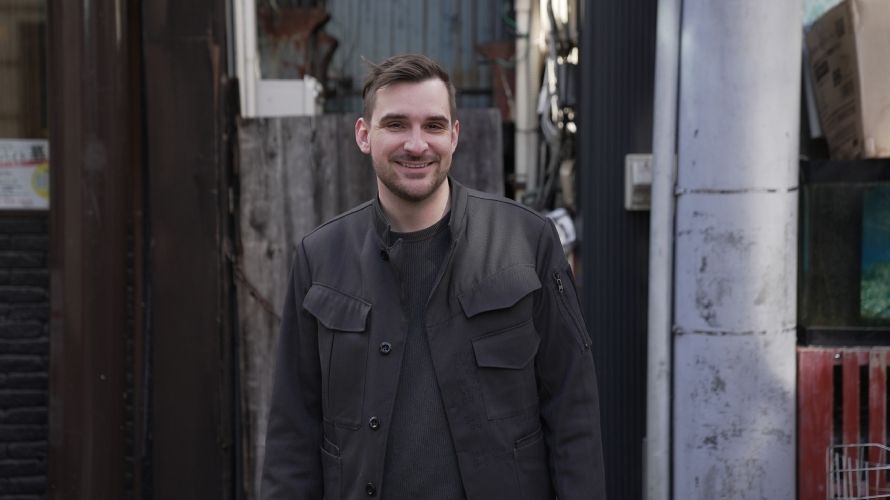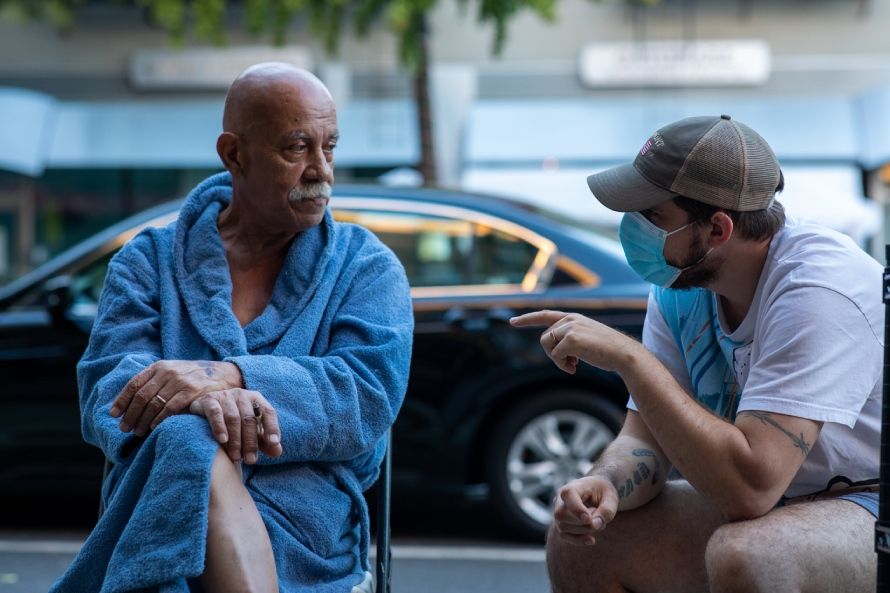
Meet Kevin Haefelin, One of the 5 Winners of the 5th Annual Focus Features & JetBlue Student Short Film Showcase
A Q&A with the writer and director of the urban fable The Fuse.
The Gotham Film & Media Institute announced that Kevin Haefelin’s short film The Fuse is one of five works chosen by a special jury of filmmakers, curators, and critics for the Focus Features & JetBlue Student Short Film Showcase. Created as his MFA thesis film for Columbia University, The Fuse was selected from projects from 34 different graduate programs.
Trigger Warning: Attempted suicide.
The Fuse is the final film in Haefelin’s trilogy about life in New York City. Jorge Gabino stars as Cassius, a fired garbageman who decides to end his life, only to have his plans disrupted when a fuse blows. As he travels the city looking for a replacement, he discovers a new outlook on life in this urban fable.
We asked Haefelin to tell us a little about the inspiration for his film, the artists who influenced him, and his plans for the future.
Follow him on Instagram: @haefelin
Kevin Haefelin's The Fuse
Where did the idea for The Fuse come from?
During the pandemic and the uncertainties that followed, I was gripped by anxiety. I looked for different ways to relieve this tension. I explored different types of meditation and, one day, my breath was stopped by a lucid dream in which a man had his entire home and life destroyed by hoodlums. The scene's violence stayed with me as I tried to make sense of it. The terms “essential workers" and "heroes" came up. Suddenly, I realized that my character was older and alone, but he was a hero, a modern-day gladiator trying to make an impossible comeback.
The character was indispensable but also invisible. He tried to make ends meet by picking up garbage and cleaning the streets at night. He and I had to learn how to live in this new world. I named my silent character "Cassius." I wanted to tell a fable about New York City, using comedy to soften the blow and make the harshness of life acceptable. There's good and bad humanity around every corner in New York City. But honestly, there's no place else I'd rather be. It doesn't have to make perfect sense if there's a glimmer of hope. That's what The Fuse is all about: hope.
How did you find your cast?
For the secondary roles, I worked with a fantastic casting director who helped me find the perfect actors to build a mosaic of New Yorkers. Cassius had to be a real working man with the years and the hands to show for it. The trained actors we looked at were very good, but I couldn’t shake the feeling I was missing something. One day, while venting my concerns to Youmi, my wife and producer, she told me we had to go out in the streets for inspiration. Walking in my neighborhood, I saw a man with a wheeler slowly coming down a ramp. It looked just like a scene I had imagined in the film. I got excited as I watched him go towards a table of domino players. I turned around and smiled at my wife, who asked why I wasn’t there talking to them already. Jorge Gabino was sitting at that table. He was part of the Wise Tower community in the Upper West Side, playing dominoes every Sunday at Turtle Park. Jorge, who I cast as Cassius, had been a NYC sanitation worker for over 20 years and was a respected, strong, and proud man. He loved the script, so I gave him a screen test. I can’t describe what I felt while filming him. He had such a presence, and his authenticity, strength, and love pierced the lens. I rewrote parts of the script to fit closer to Jorge’s experience. He was a natural, and I was incredibly proud when he won the Best Actor Grand Prize at the Rhodes Island International Film Festival.

Writer-director Kevin Haefelin
What captures most what you saw when you first imagined the film?
The part when Cassius is on the train. The unhoused veteran by him mirrors his future existence, and, at that moment, without a word spoken, they both know what he will do. The ride is melancholically beautiful, enabling their entry into the depths of the unknown. Shooting this scene was complicated. We were moving with a tiny crew, and a lot was happening. Jorge had to find his bearings, and it was one of the most emotional scenes, so the stakes were high. When I looked through the lens, it felt as if time had stopped. Cassius had decided he was giving away everything he had left to the veteran. When I called for the cut, Jorge was holding back tears, and he said he had felt it deeply inside; I couldn't agree more. We took a moment to process the emotions, and my heart felt exactly what I had pictured when I had written the script.
What was the biggest lesson you learned working on The Fuse?
It's always an immense privilege to be able to go into production. Filmmaking is a people business, and I was humbled by all the fantastic cast and crew who stuck around through thick and thin. I can never underestimate the value of trust and respect, especially when working with first-time actors. Jorge touched so many people worldwide because he was able to perform to his full potential by feeling comfortable and safe.
We did not have a dedicated Mental Health Coordinator on set this time, but I think it's important, especially when dealing with tough subjects that could be triggering. I think it's essential to talk about what we're going to shoot and let everyone express concerns to a neutral elected party. Everyone deserves to be safe on set, and it's not fair for anyone to walk away hurt, especially when this job requires 150% commitment and passion.
As an emerging filmmaker, who are your influences?
I’m inspired by Aki Kaurismaki for his blunt and humane approach to life in his films, and how he softens the edges for the audience to take the blow, is at the top of my list. I highly esteem his Loser and Proletariat trilogy and, more recently, his last film Fallen Leaves. His storytelling is meticulous, straight to the point, and minimalistic. I find his simple, tableau-like shots fascinating. I like his way of composing shots with urban, desolate landscapes that can be simultaneously poetic, dreadful, and beautiful. I’m a very visual filmmaker and tend to shy away from dialogue, so the deadpan delivery of very few lines is my sweet spot. Other filmmakers I admire are Jim Jarmusch, Ken Loach, Robert Bresson, Ozu Yasujiro, and Stanley Kubrick, to name a few.
I’m also inspired by new realism painters, like Edward Hopper. His depiction of loneliness and alienation captures the everyday life of lonely individuals. The shifting society in a big city and the anonymity of its inhabitants is something I feel drawn to. I like developing stories about lonely, misunderstood individuals and offering reassurance that we are not alone in our suffering. We’re all in the same boat.

The Fuse
What was the first film you saw that made you want to be a filmmaker and why?
Louis de Funès and Bertrand Blier planted the seed of cinema in me as a young boy. The Mad Adventures of Rabbi Jacob and Ménage were the films that started it all for me. They made me laugh and cry and offered a straightforward escape from the mundane daily life, which felt truly magical at the time.
Are you working on a feature film?
I'm developing a psychological/folk horror feature set in the mountains of Japan. The aging population with bleak prospects coupled with the cultural fetishization of the West was the impetus for this story, where an average guy from Boston meets a runaway American soldier in Tokyo, and they end up in a remote rural mountain village where some things are not quite right. It's the first time I've co-written with my producer, partner, and wife, who is of Japanese descent. We've been researching and writing in Japan for the past six months. I can't wait to bring this project to the world.
I'm also writing a coming-of-age drama feature set between suburban Atlanta and a moss-filled trailer park about a pre-teen in a dysfunctional family dealing with the arrival of a half-brother. His mother starts a new life, and he hates her for it. He runs away to his father, whom he admires, but the father’s obsession with bodybuilding gets him hooked on steroids, and the boy witnesses him turn into a beast. It's very personal because it touches on my experiences growing up in the South. It deals with issues like the construction of a male identity that leads to body dysmorphia and the violence that comes with it. It's about owning your story and taking back control over your own life.
This interview has been edited and condensed for clarity.